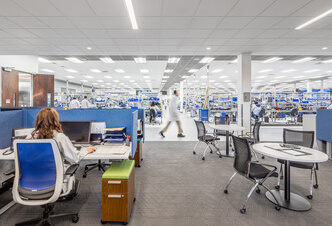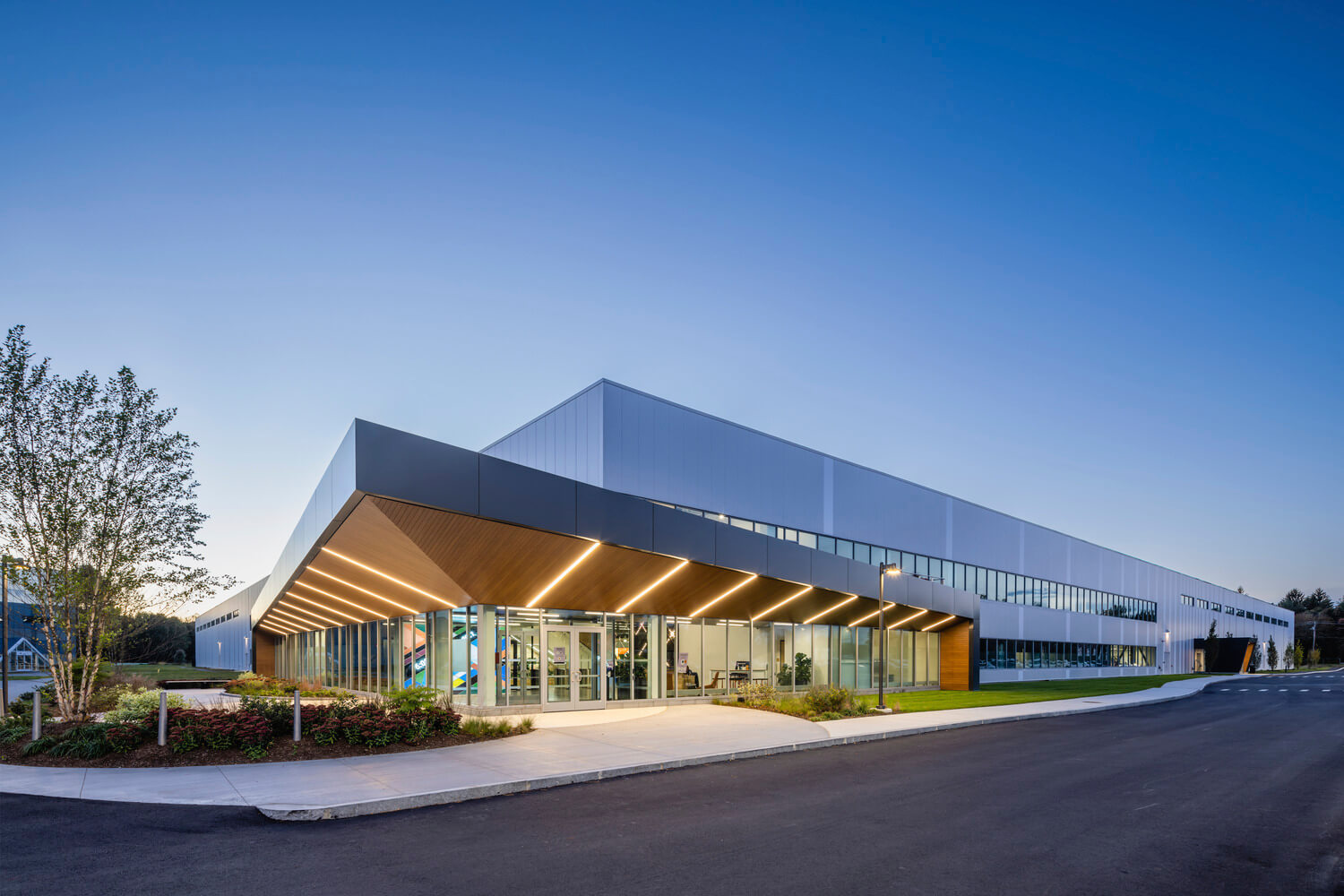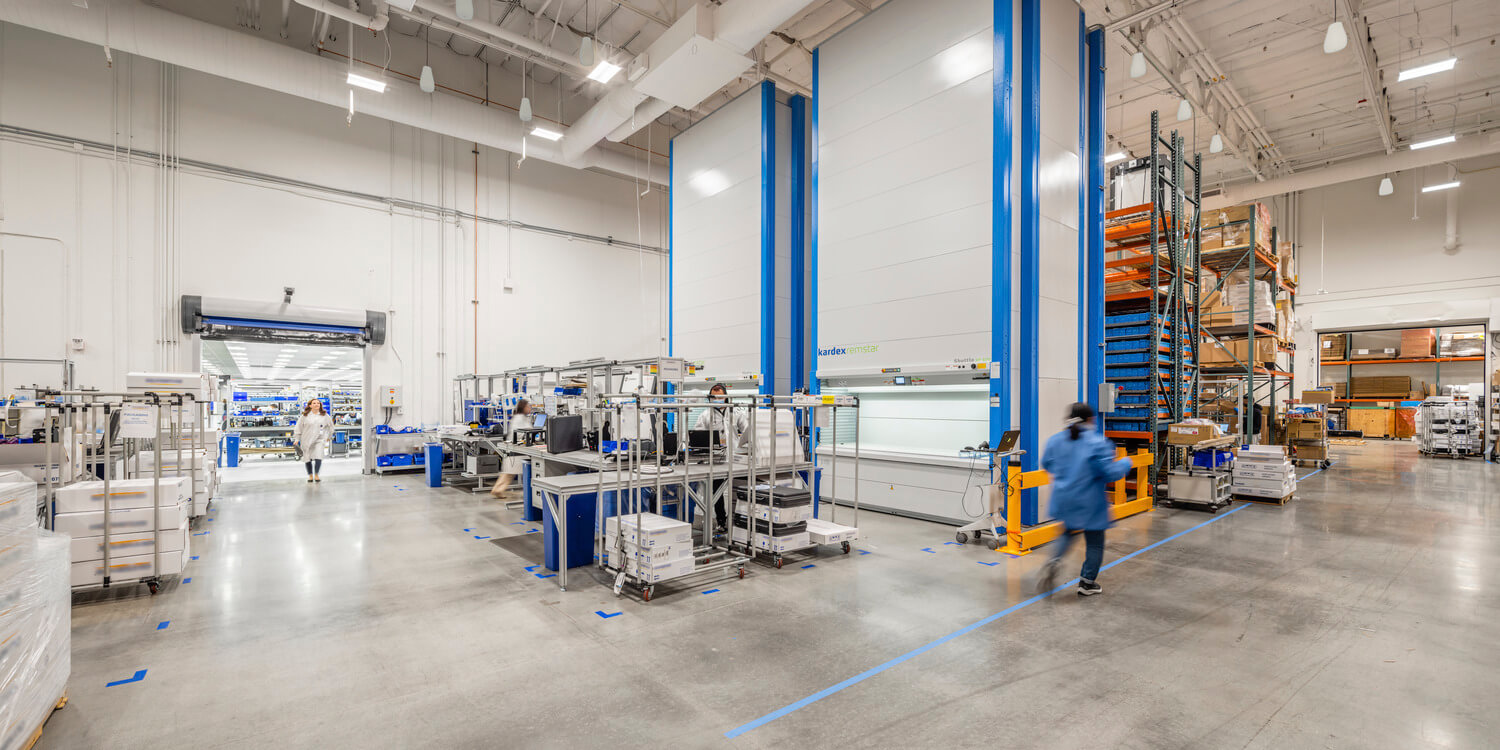
A construction trailer, a restaurant, a daycare, a warehouse, and an apartment.
What do these have in common? They are places where people work.
Our definition of workplace has evolved. Gone are the days of Working Girl, Mad Men, and the “traditional” office environment. Today’s workforce—whether “desked” or “deskless”—demands a more flexible, agile, and engaging work environment.
In response, organizations should adopt a new mindset when investing in work environments: show your employees that you are committed to not only their performance, but to their greater experience and wellbeing.
Harvey Performance/Gorham Manufacturing Facility
View Project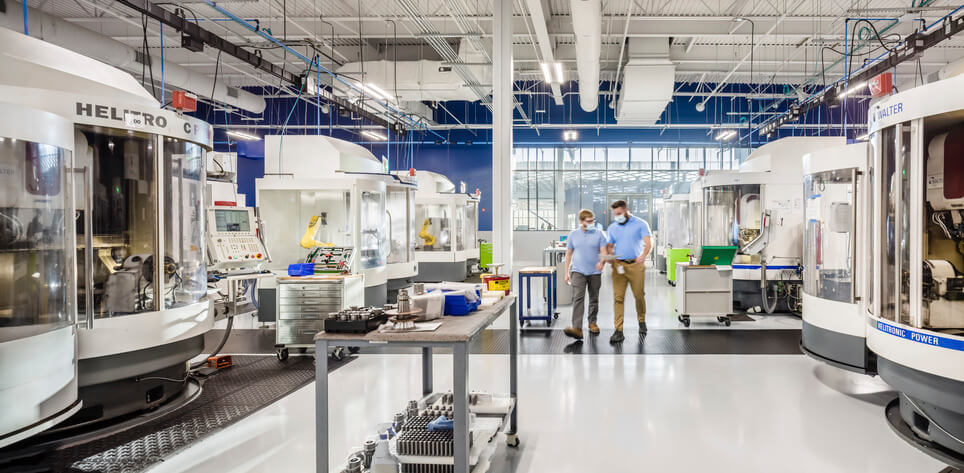
Beyond the office
Put simply, a desked worker is someone who needs a dedicated individual workspace where they perform tasks, be it administrative or functional.
In the popular imagination, “workplace” used to mean the same thing as “office space”. Desked environments were defined narrowly. Think open-office planning, systems furniture, and modular, reconfigurable spaces designed to last seven years—historically the average length of an office lease.
Today’s desked environments encompass so much more. Along with traditional office space, we now include laboratories, both wet and dry. We include technical facilities, such as call centers, repair centers, and production facilities. And we include manufacturing spaces, such as pharmaceutical and heavy industrial buildings.
Beyond the office
Put simply, a desked worker is someone who needs a dedicated individual workspace where they perform tasks, be it administrative or functional.
In the popular imagination, “workplace” used to mean the same thing as “office space”. Desked environments were defined narrowly. Think open-office planning, systems furniture, and modular, reconfigurable spaces designed to last seven years—historically the average length of an office lease.
Today’s desked environments encompass so much more. Along with traditional office space, we now include laboratories, both wet and dry. We include technical facilities, such as call centers, repair centers, and production facilities. And we include manufacturing spaces, such as pharmaceutical and heavy industrial buildings.
Lab workers at Entrada Therapeutics enjoy views across Boston harbor, spacious workstations, and fluid connections with office and amenity spaces.
View Project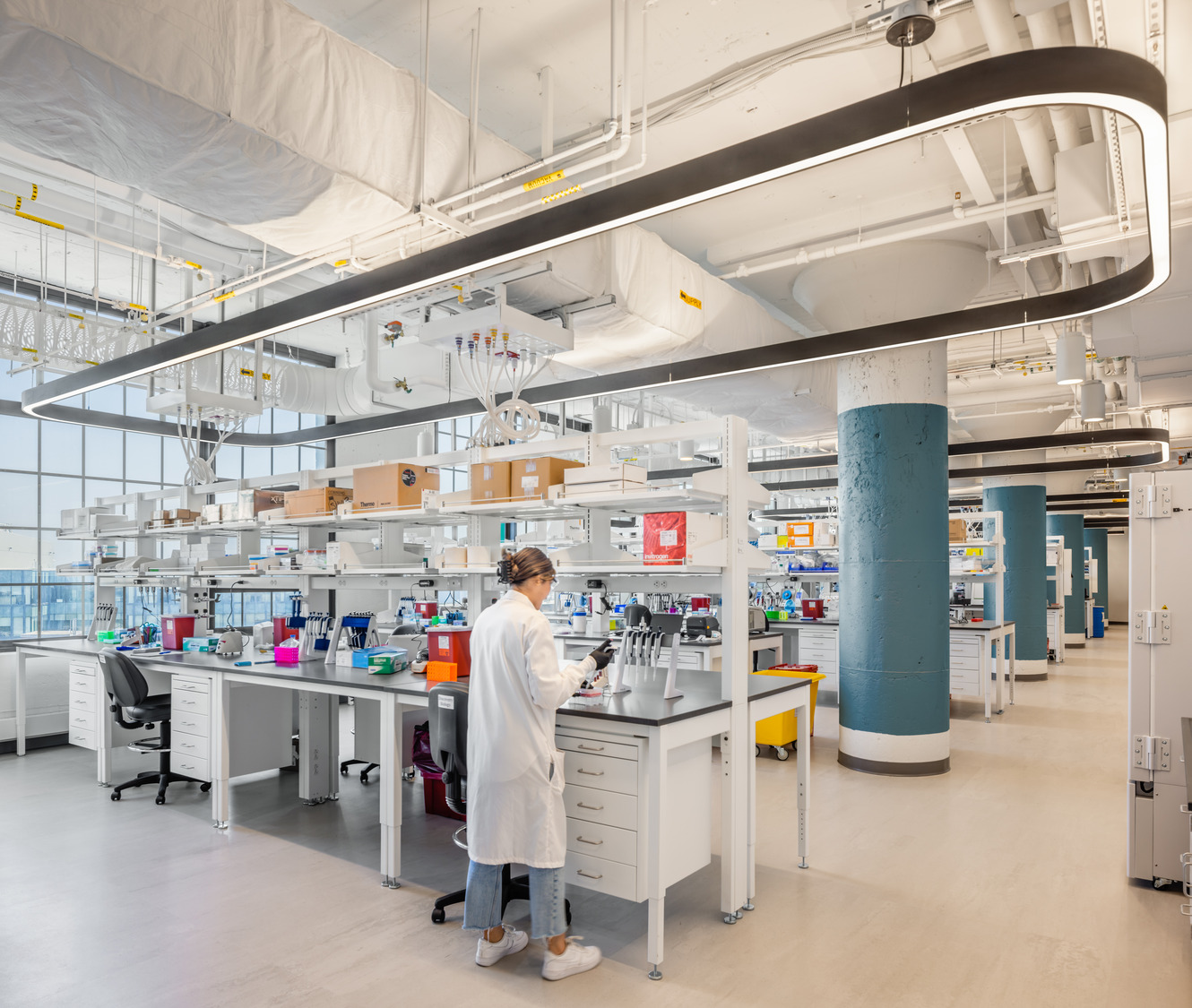
How do we make sure desked environments are high quality? We look beyond the function. Giving a lab worker the best, most cutting-edge equipment to conduct their research does not in itself mean they will be productive and efficient. Rather, it is the experiential quality of the space that drives employee satisfaction.
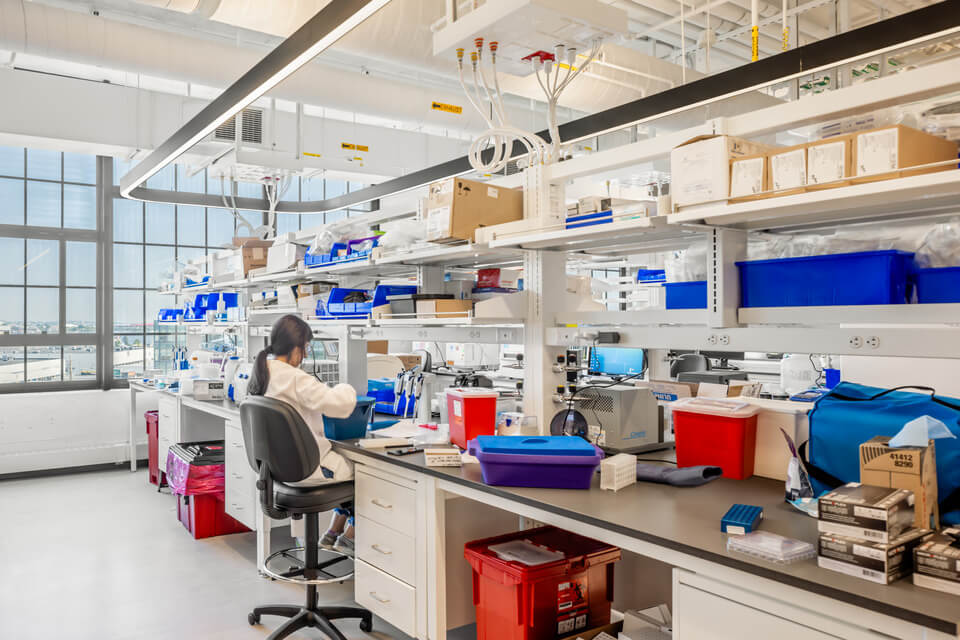
Lab workers at Entrada Therapeutics enjoy views across Boston harbor, spacious workstations, and fluid connections with office and amenity spaces.
How do we make sure desked environments are high quality? We look beyond the function. Giving a lab worker the best, most cutting-edge equipment to conduct their research does not in itself mean they will be productive and efficient. Rather, it is the experiential quality of the space that drives employee satisfaction.
Fortunately, we already know how to provide great desked experiences in the workplace. The same factors that have long been studied in traditional desked environments simply need to be applied to non-traditional desked environments. Call them “experiential factors”:
- Noise
- Temperature
- Adequate Space/Privacy
- Workstation or Furniture
- Natural Light
- Air Quality
- Views Outside
- Access to Outdoors
- Overall Aesthetics
- Access to Amenities
One of our recent West Coast projects puts this thinking into action. Olympus employs hundreds of technical shift workers at its new National Service Center in San Jose, CA. Their jobs—repairing high-end medical and surgical devices to 48-hour deadlines—demand a high quality desked environment.
Watch: A new production and repair hub for Olympus in San Jose, CA, designed by SMMA.
The National Service Center says a lot about this new conception of workplace. By taking seriously the needs of non-traditional desked workers, Olympus has achieved a highly sought-after goal: equity. The design locates all workers on a single floor, with no barriers or silos. Shift workers enjoy the same perks and amenities as their office colleagues: a large break area for lunches, informal gatherings, and training sessions.
In other words, the old white-collar/blue-collar tension is banished by granting equal consideration to all desked workers.
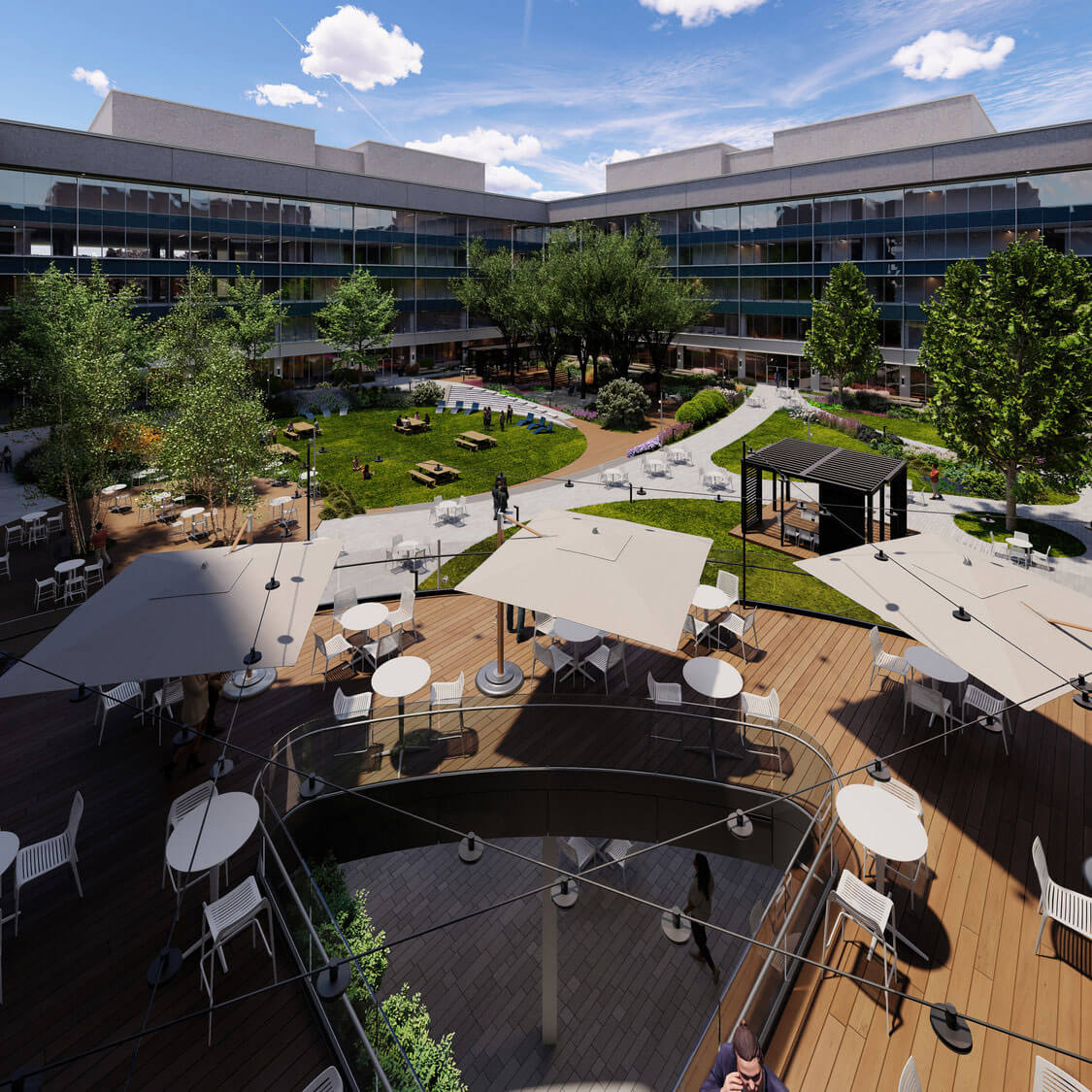
Being desked doesn’t mean you are limited to that workspace only.
To do their best work, workers require a variety of desked environments throughout the day. These range from the classic “desk” to something far different.
At a fintech client’s workplace in Quincy, MA, a central exterior courtyard provides alternate individual work environments to complement the traditional indoor workplace. Untethered from their individual workstations, workers can enjoy more experiential factors such as air quality, access to outdoors, and natural light.
What about workers who do not need an individual workspace?
Deskless workers, whether baristas, kindergarten teachers, or warehouse workers, deserve the same experiential factors as their desked counterparts.
Historically, we have treated these as purely functional spaces. We have focused on the customer and/or functional experience and not the employee. Yet the same factors we discussed earlier for desked workers apply here.
In fact, with deskless jobs often being more physically taxing, some factors—temperature, noise, and air quality—become even more important. Many deskless workers spend a significant amount of time on their feet. Flooring materials become a critical decision. We then ask ourselves: When people get the chance to sit down and take a break, what kind of environment are they doing that in? Are they getting the opportunity to quickly rejuvenate?
